Unfortunately I had a poor night as a sore throat had turned into a temperature and head cold, and in the morning I didn't feel at all well. John had been disturbed by me so he was under-par also. But we had a morning tour and had opted for both optional tours today so we decided to just go for it and make sure we had a quiet time between activities. That ended up being the right decision as, by pacing ourselves, we were able to do everything. However, we didn’t really have time to just wander the streets so will have to come back!!
We liked the local guide here but not all the group felt the same
. He had a strong accent (JB nicknamed him Igor) but made a point of talking slowly and precisely and even spelling some words out. We found him to be very pleasant. He did repeat information which was the complaint of some people but not everyone did all the activities with him and perhaps could not adjust to his style.
Prague is a city of about 1.2 million in a country of 10 million. It is known as the city of spires because of all the church spires and other towers. It was created from 4 towns that merged in the 18th century. The Vltava river runs through the city then joins the Alba before running into the North Sea.
We started with a drive and heard:
Part of the city was vineyards in the past.
There are 150 churches in the city, mainly Roman Catholic.
The city wall dates from the 14 century but most has gone
.
The Royal gardens had lemon, fig and pineapple plants here in the16th century.
Tulips came Here from Turkey well before being in the Netherlands.
The island in the middle of the river is used mainly for sports – we also saw a slalom kayak course on the river.
The New Town dates from the 14th century and the reign of Charles IV. At that time Prague was the 2nd largest city in Europe (after Rome) with 50,000 people.
The original centre was the castle and the Lesser town below it dates from the 13th century.
Much of the Lesser town buildings are from the 17th and 18th centuries after a big fire in 1541. Many are embassies.
The Hasburg’s had their palace here until they moved to Vienna at the end of 16 century.
The original palace is now parliament.
We started the walking part at the Czech bridge, the shortest bridge over the river, with Yellow columns topped with angels. We saw the Metronome on the hill that has replaced the largest statue of Stalin in Europe that was removed after the fall of Communism. We could see the Castle and also the monastery where we had been the previous evening
.
We then moved to the Jewish quarters which date from the 11th century. Twice in the past the Jews had been banished from the city but they were later given full rights in 1848. We saw the 'new-old’ synagogue – supposedly built on existing foundations hence the name. There was also a 15th century cemetery containing 12,000 graves and the old Jewish Town hall. Next was an old synagogue which we were told is now a Holocaust memorial with the names of 77,000 victims, as well as children’s drawings – almost all killed in the only Death Camp in Czechoslavakia.
We next saw the Concert Hall with sculptures of famous composers on the roof. When the Nazis were in control Hitler told them to destroy the statue of a Jewish composer but the troops couldn’t recognise him and destroyed Wagner (the great German composer) instead. This was replaced in a hurry when the mistake was discovered.
We then went to the King Charles Bridge built in the 14th century on the site of a 10th century bridge
. This was under renovation but could be walked over. It connects the Lesser town to the New town so was very important. The 30 statues were added later. The tower is the only part of the original fortifications still standing. Nearby is a statue of Charles IV holding the deeds of Prague University, which he founded. The figures on the sides show the faculties of Medicine, Law, Philosophy and Theology.
The square had the bridge tower on one side, churches on two sides, and a Museum of Torture and souvenir shops on the last side!!
We then walked to the old town square to see the square and especially the Astronomical clock. At 11am we saw the mechanical display – which was a little disappointing .Then a buglar played from the top and we all cheered.
We had nearly 3 hours to have lunch and explore, and we deliberately did little. We had a nice but overpriced lunch in the square then strolled slowly to the river before revisiting the Charles Bridge
. Then we went back over the river to meet for the afternoon tour.
This part took us to the 1000 year old Prague Castle – which will go down in our memory as the ‘Cast-le’ because of the guide’s pronunciation. The castle is a complex of a number of buildings and is the largest in the world. We entered from the top, past 2 guards and exited 2 hours later at the bottom.
We first saw the outside of the Royal Palace which is now the home of the Czech President.
Probably the most obvious feature is St Vitus Cathedral. I was surprised to hear much of it is relatively new. It was started in the14th century but not completed until 1929. The front is original with its pulpit, underground crypt and an historic organ. We heard that St Vitus had been tortured by being dropped into boiling oil which had made him twitch, and hence the name for epilepsy, St Vitus Dance. There was a solid silver display for St John of Nepomuckeo (sp?) the Queen’s confessor who refused to divulge the details of her confessions and was thrown from a bridge. St Wenceslas chapel was built on the site of his original tomb and uses 1300 semi precious stones. The door to the Crown chamber, holding the crown jewels is in the chapel – it needs 7 keys to open and they are held by 7 separate people like the President, PM, Archbishop etc.
From the outside we could see a 10m diameter window on the new part and the 16th century steeple which is 96m high
. The clock is in 2 parts with hours on top and minutes on the bottom – but it isn’t working now.
We went into the 15th century Royal Palace and saw the huge hall and replica crown jewels. At the end was the Kings private chapel which has been rebuilt and is used for classical music. We left down the 16th century staircase which was built to cater for horses because the Palace was used for sports events for the local knights.
We also saw the Basilica of St Georges which dates from 920 and is used now for concerts. The convent of St Georges is now a National Gallery
Our final visit was to the 16th century Rosenberg Palace where 5 rooms have been furnished to reflect life at the times. The bedroom had a kneeling board (for prayer) and a mouse on the floor to reflect the unsanitary conditions even in palaces. In another room details of The Institute of Gentlewomen were given. This was founded by the Queen for aristocratic females of impoverished families
. They could enter a sort of nunnery where they wore black but once a week could attend opera or a ball and could also attend any Court occasions.
I had struggled in the middle and it was lucky we were mainly inside where it was cool. We were able to get more water at a WC and I bought a fan to use it, not just for the look. At the last stop we paid 3 euro for water and the same for fanta – they were cold and it was worth it – just.
The break back in the hotel allowed us to go into the evening excursion refreshed. It was a half hour drive to a restaurant for a Czech meal with music. There was a 22% proof herbal alcoholic drink for starters.The meal was OK – but the fun part was the serving of wine through pipes held in large bowls around the waiter’s kneck. The could use these to fill your glass from up to a metre away. Anita was always clear – when it was a company provided meal the dinks were not included but for the optional excursions the drinks were unlimited and included beer, white and red wine and soft drinks
. The restaurant would have done well from us as we drank very little other than water.
The musicians were great especially the woman on the glockenspiel. They had a couple doing traditional dances on a very small floor area. They then made us all join in – and also had people dancing with them. Our tour group seemed to be the main ones involved – we also had a small group dancing on the chairs.
There was a woman from Norway celebrating her 70th birthday going around the tables. She will go down in our memory as the 38 lady – through her dress 38 could be seen in large size numerals on her knickers. We had intended to ask her why but never did. She also had a large flashing ring on her finger.
The meal concluded with pancakes and then we got the signal to leave. On the way back we got the chance to see Prague by night.
In spite of my lack of energy and the fact we paid too much for food and drink partly as a result, we loved Prague. We just wish we had had the energy to just wander much further in the lunch break. We enjoyed the variety of architecture and the history; and despite the warnings about pickpockets, we did feel quite safe here. I think we have to go back!!!
The beauty of Prague
Thursday, June 10, 2010
 Prague, Hlavní Mesto Praha, Czech Republic
Prague, Hlavní Mesto Praha, Czech Republic
Other Entries
-
6Goodbye Beijing hello Cologne
May 2615 days prior Beijing to Cologne, Chinaphoto_camera3videocam 0comment 1
Beijing to Cologne, Chinaphoto_camera3videocam 0comment 1 -
7A visit to the Dom
May 2714 days prior Cologne, Germanyphoto_camera11videocam 0comment 1
Cologne, Germanyphoto_camera11videocam 0comment 1 -
8Eau de Cologne
May 2813 days prior Cologne, Germanyphoto_camera5videocam 0comment 0
Cologne, Germanyphoto_camera5videocam 0comment 0 -
9Beer and Chocolate
May 2912 days prior Cologne, Germanyphoto_camera8videocam 0comment 2
Cologne, Germanyphoto_camera8videocam 0comment 2 -
10Training to Frankfurt
May 3011 days prior Frankfurt, Germanyphoto_camera5videocam 0comment 2
Frankfurt, Germanyphoto_camera5videocam 0comment 2 -
11"Ich bin ein Berliner"
May 3110 days prior Berlin, Germanyphoto_camera11videocam 0comment 4
Berlin, Germanyphoto_camera11videocam 0comment 4 -
12Undercover in Berlin
Jun 019 days prior Berlin, Germanyphoto_camera11videocam 0comment 2
Berlin, Germanyphoto_camera11videocam 0comment 2 -
13Poles apart
Jun 028 days prior Warsaw, Polandphoto_camera7videocam 0comment 0
Warsaw, Polandphoto_camera7videocam 0comment 0 -
14Markets and memories
Jun 037 days prior Warsaw, Polandphoto_camera16videocam 0comment 0
Warsaw, Polandphoto_camera16videocam 0comment 0 -
15Personal thoughts on Warsaw
Jun 046 days prior Krakow, Polandphoto_camera0videocam 0comment 3
Krakow, Polandphoto_camera0videocam 0comment 3 -
16To Krakow via Auchwitz
Jun 046 days prior Krakow, Polandphoto_camera10videocam 0comment 0
Krakow, Polandphoto_camera10videocam 0comment 0 -
17A Krakow rendezvous
Jun 055 days prior Krakow, Polandphoto_camera13videocam 0comment 1
Krakow, Polandphoto_camera13videocam 0comment 1 -
18Romance on the Danube
Jun 064 days prior Budapest, Hungaryphoto_camera10videocam 0comment 0
Budapest, Hungaryphoto_camera10videocam 0comment 0 -
19At large in Budapest
Jun 073 days prior Budapest, Hungaryphoto_camera13videocam 0comment 1
Budapest, Hungaryphoto_camera13videocam 0comment 1 -
20A waltz in Vienna
Jun 082 days prior Vienna, Austriaphoto_camera10videocam 0comment 2
Vienna, Austriaphoto_camera10videocam 0comment 2 -
21Vienna Paradox
Jun 091 day prior Vienna, Austriaphoto_camera0videocam 0comment 0
Vienna, Austriaphoto_camera0videocam 0comment 0 -
22Proceeding to Prague
Jun 091 day prior Prague, Czech Republicphoto_camera6videocam 0comment 1
Prague, Czech Republicphoto_camera6videocam 0comment 1 -
23The beauty of Prague
Jun 10 Prague, Czech Republicphoto_camera17videocam 0comment 0
Prague, Czech Republicphoto_camera17videocam 0comment 0 -
24Munchen mini stay
Jun 111 day later Munich, Germanyphoto_camera8videocam 0comment 1
Munich, Germanyphoto_camera8videocam 0comment 1 -
25The Romantic Road
Jun 122 days later Frankfurt, Germanyphoto_camera13videocam 0comment 0
Frankfurt, Germanyphoto_camera13videocam 0comment 0 -
26Meeting Margo in Marburg
Jun 133 days later Marburg, Germanyphoto_camera6videocam 0comment 0
Marburg, Germanyphoto_camera6videocam 0comment 0 -
27Out and about in Marburg
Jun 144 days later Marburg, Germanyphoto_camera6videocam 0comment 0
Marburg, Germanyphoto_camera6videocam 0comment 0 -
28The football in Marburg
Jun 155 days later Marburg, Germanyphoto_camera2videocam 0comment 0
Marburg, Germanyphoto_camera2videocam 0comment 0 -
29Exploring Hesse
Jun 166 days later Marburg, Germanyphoto_camera14videocam 0comment 1
Marburg, Germanyphoto_camera14videocam 0comment 1 -
30South to the Alsace
Jun 177 days later Mittelbergheim, Francephoto_camera6videocam 0comment 1
Mittelbergheim, Francephoto_camera6videocam 0comment 1 -
31Vins des Pay
Jun 188 days later Mittelbergheim, Francephoto_camera6videocam 0comment 1
Mittelbergheim, Francephoto_camera6videocam 0comment 1 -
32Strasbourg and Beyond
Jun 199 days later Mittelbergheim, Francephoto_camera14videocam 0comment 0
Mittelbergheim, Francephoto_camera14videocam 0comment 0 -
33Back to Bodensee
Jun 2010 days later Meersburg (Bodensee), Germanyphoto_camera5videocam 0comment 0
Meersburg (Bodensee), Germanyphoto_camera5videocam 0comment 0 -
34Exploring Bodensee
Jun 2111 days later Meersburg (Bodensee), Germanyphoto_camera15videocam 0comment 0
Meersburg (Bodensee), Germanyphoto_camera15videocam 0comment 0 -
35Tratorria da Nando
Jun 2212 days later Barcarola, Italyphoto_camera9videocam 0comment 1
Barcarola, Italyphoto_camera9videocam 0comment 1 -
36Where eagles dare
Jun 2313 days later Barcarola, Italyphoto_camera8videocam 0comment 2
Barcarola, Italyphoto_camera8videocam 0comment 2 -
37Conquering the Valdastico hairpins
Jun 2414 days later Barrcarola, Italyphoto_camera11videocam 0comment 0
Barrcarola, Italyphoto_camera11videocam 0comment 0 -
38On the road with Nico
Jun 2515 days later Barcarola, Italyphoto_camera18videocam 0comment 0
Barcarola, Italyphoto_camera18videocam 0comment 0 -
39On the road to La Marche
Jun 2616 days later Cupramontana, Italyphoto_camera6videocam 0comment 2
Cupramontana, Italyphoto_camera6videocam 0comment 2 -
40Settling in at Cupramontana
Jun 2717 days later Cupramontana, Italyphoto_camera11videocam 0comment 0
Cupramontana, Italyphoto_camera11videocam 0comment 0 -
41Sun, sand and Sirolo
Jun 2818 days later Cupramontana, Italyphoto_camera7videocam 0comment 0
Cupramontana, Italyphoto_camera7videocam 0comment 0

 Prague, Hlavní Mesto Praha, Czech Republic
Prague, Hlavní Mesto Praha, Czech Republic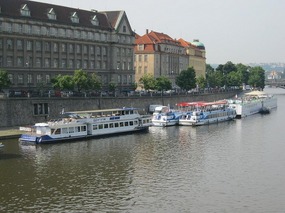
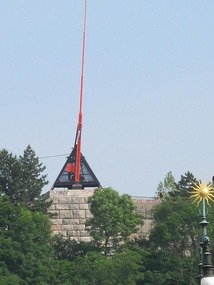
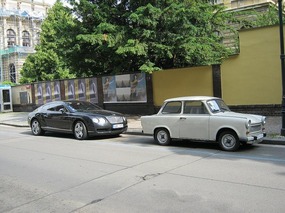
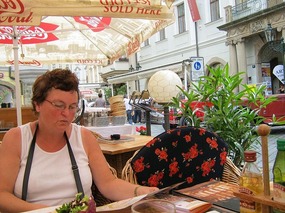
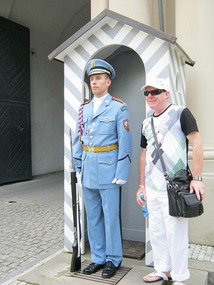
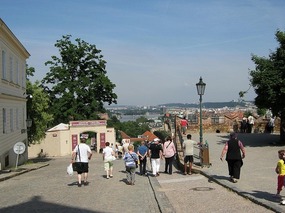
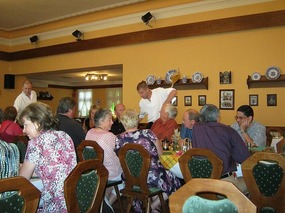
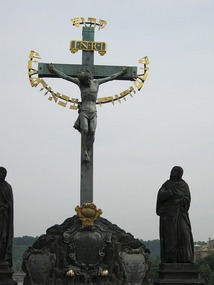








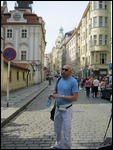
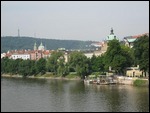


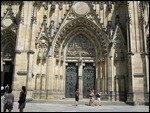

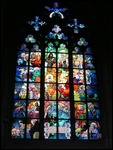
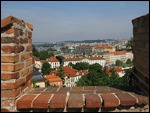
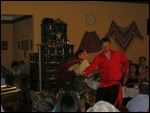
2025-05-23